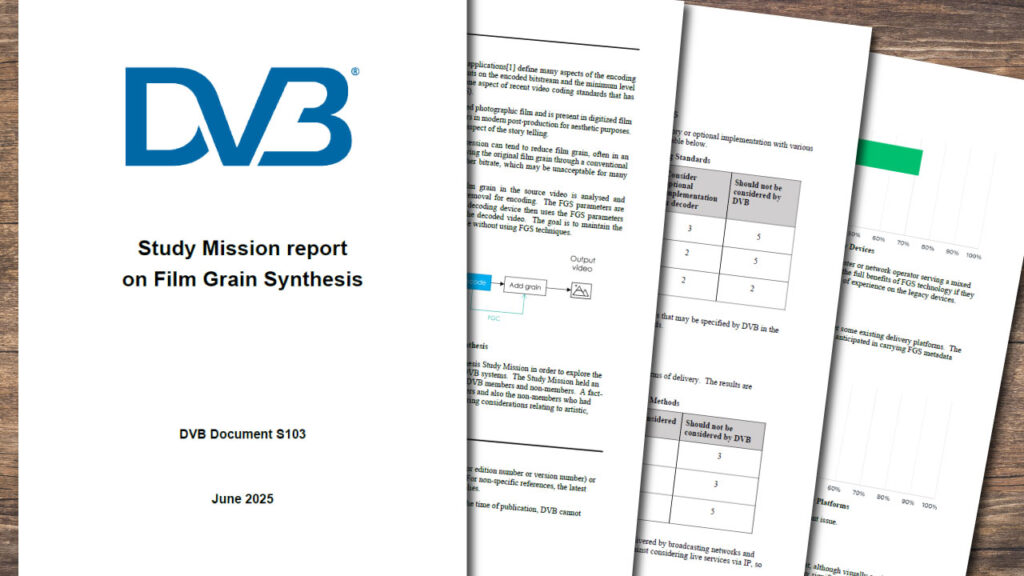
DVB releases findings from Film Grain Synthesis study mission
The DVB Project has published the final report of a study mission that examined the potential role of Film Grain Synthesis (FGS) in DVB services. The work took place under DVB’s commercial working group on audio and video coding, CM-AVC. It was led by Ken McCann, representing Dolby.
Film grain is often a deliberate artistic choice in content creation, especially in movies. However, video compression tends to diminish or remove film grain, which can undermine the original creative intent. Film Grain Synthesis is a technique supported by recent video codecs that allows the characteristics of film grain in the original content to be analysed and captured as metadata. This information is then used by decoders to recreate grain in the output video, helping to preserve the intended look at lower bitrates.
DVB’s study mission explored whether there was evidence of a complete value chain to support the use of FGS across DVB services and delivery systems. The group organized an online workshop in March 2024 and later conducted a survey among DVB members and other stakeholders.
Continued monitoring
While the study was comprehensive, it did not find evidence of an end-to-end ecosystem that would justify DVB specifying FGS at this time. As such, no further work is planned within DVB for now. However, related activities by other standards bodies — including JVET, which has evaluated FGS in recent codec standards, and 3GPP, which has considered use cases in 5G video — will continue to be monitored.
This work highlights DVB’s commitment to exploring new technologies as they emerge, ensuring its specifications remain aligned with industry needs.
The full report, DVB BlueBook S103, is available on the DVB website.
